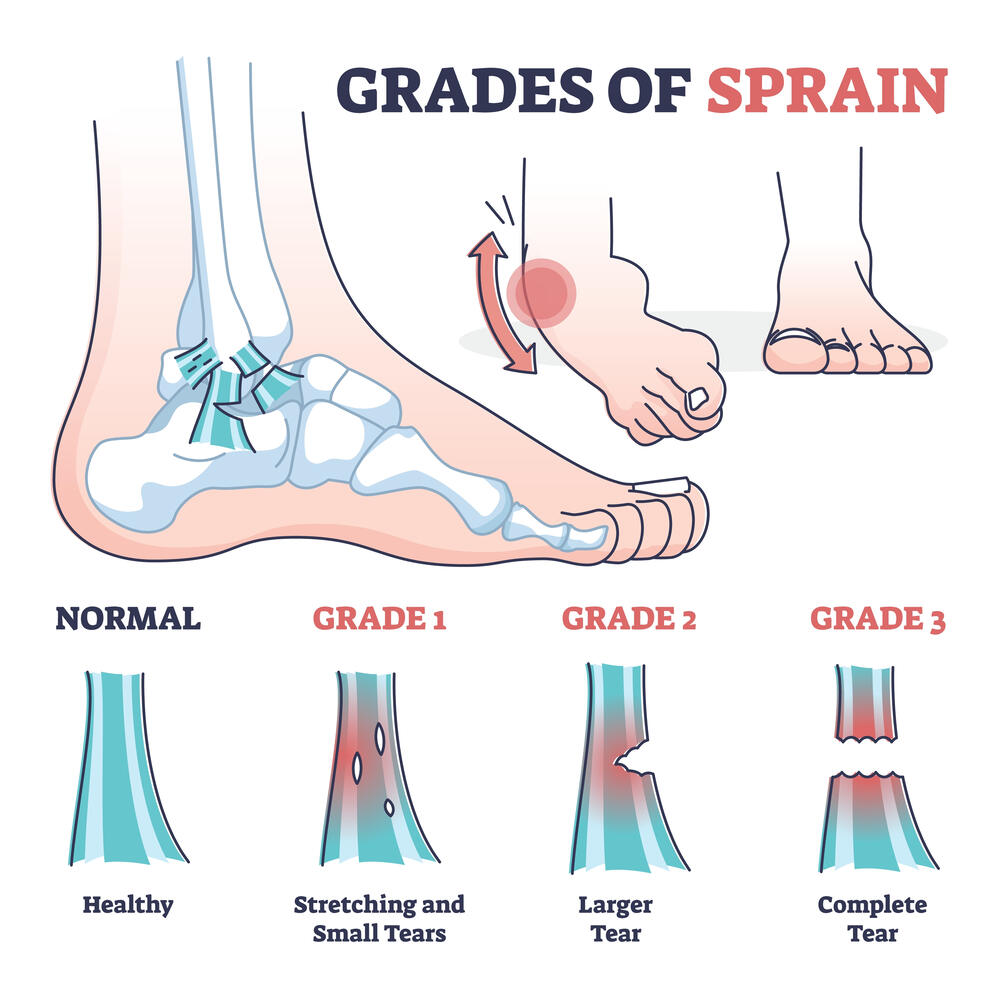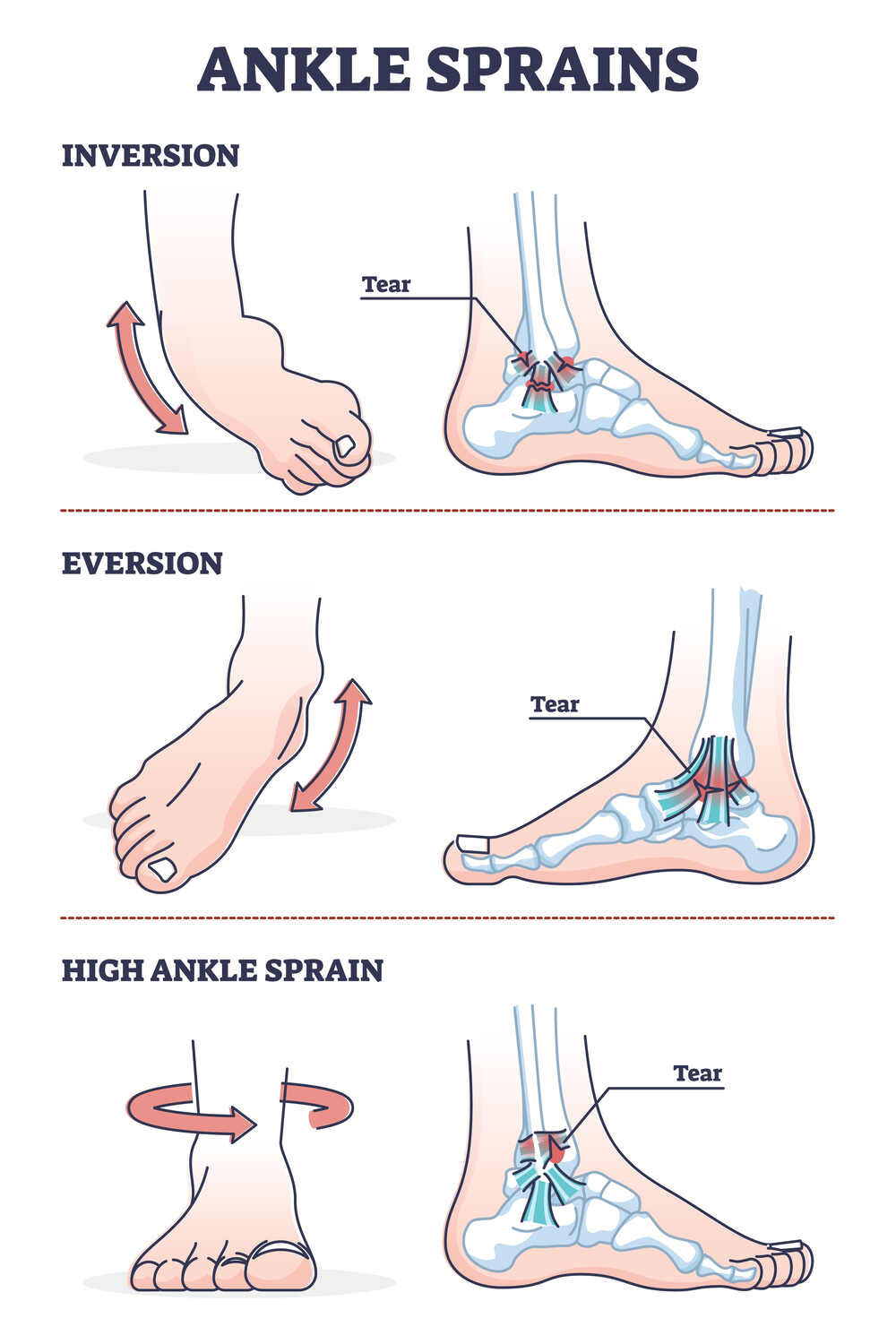Ankle Sprains in Basketball: The Predominant Nemesis
2nd Jan 2024
Basketball is a fast-paced, dynamic sport that demands agility, speed, and quick changes in direction. As players maneuver across the court, engaging in jumps, pivots, and abrupt stops, they are particularly susceptible to certain types of injuries. One of the most common injuries in basketball is the dreaded ankle sprain.
Ankle Sprains & Basketball
Ankle sprains are an omnipresent challenge for basketball players. The nature of the game exposes athletes to constant changes in direction and abrupt halts, putting significant stress on the ankle joints. As players pivot on a dime, jump for rebounds, or make quick lateral movements to outmaneuver opponents, the risk of landing awkwardly and rolling or twisting an ankle increases substantially.
The mechanics of an ankle sprain involve
the stretching or tearing of ligaments that support the ankle joint. When a
player lands on an opponent's foot, lands awkwardly after a jump, or changes
direction suddenly, the ligaments can be subjected to forces beyond their
normal range, resulting in injury.
The three grades of ankle sprains:

Grade 1 Ankle Sprain: Stretching and Small Tears
●Description: Grade 1 ankle sprains involve mild stretching and microscopic tearing of the ligament fibers. This is the least severe type of ankle sprain.
●Symptoms: Players may experience mild pain, swelling, and minimal loss of function. The ankle ligaments are stretched but not significantly torn.
●Treatment: Rest, ice, compression, and elevation (R.I.C.E.), along with anti-inflammatory medications, are commonly recommended. Physical therapy may aid recovery by focusing on strengthening and stabilizing the ankle.
Grade 2 Ankle Sprain: Larger Tear
●Description: Grade 2 sprains involve a partial tear of the ligament. This type of sprain is characterized by more significant damage to the ligament fibers.
●Symptoms: Players typically experience moderate pain, swelling, bruising, and some loss of function. The joint may feel unstable or "loose."
●Treatment: R.I.C.E. remains a cornerstone of initial treatment. Immobilization with a brace or splint may be necessary, followed by rehabilitation exercises to regain strength and stability. Severe cases may require medical evaluation.
Grade 3 Ankle Sprain: Complete Tear
●Description: Grade 3 ankle sprains represent a complete tear of the ligament, leading to a loss of integrity in the affected ligament.
●Symptoms: Severe pain, significant swelling, extensive bruising, and a profound loss of function characterize Grade 3 sprains. The joint may be highly unstable.
●Treatment: Immediate medical attention is crucial. Treatment may involve immobilization with a cast or walking boot, followed by an extended period of rehabilitation. Surgical intervention may be necessary in some cases.
Types of Ankle Sprains: A Comprehensive Exploration

Inversion Ankle Sprain:
●Mechanism of Injury: Inversion ankle sprains, the most prevalent type, occur when the ankle rolls inward. This often transpires during abrupt changes in direction or awkward landings, placing stress on the ligaments situated on the outer side of the ankle.
●Symptoms: The aftermath of an inversion ankle sprain includes pain, swelling, and difficulty bearing weight on the affected foot. Tenderness on the outer ankle is a common indicator.
●Treatment: Initial management involves the R.I.C.E. protocol (Rest, Ice, Compression, Elevation) to minimize swelling and alleviate pain. Physical therapy plays a pivotal role in restoring strength and stability to prevent reoccurrence.
Eversion Ankle Sprain:
●Mechanism of Injury: Eversion ankle sprains, less frequent than their inversion counterparts, unfold when the ankle rolls outward. This can result from a forceful impact on the inner ankle or a sudden twist, impacting the ligaments on the inner side of the ankle.
●Symptoms: Similar to inversion sprains, individuals with eversion sprains experience pain, swelling, and difficulty walking. Tenderness on the inner ankle is a key symptom.
●Treatment: Employing the R.I.C.E. protocol is paramount in the initial stages, followed by supportive measures such as bracing to limit movement. Physical therapy aids in regaining range of motion and building strength.
High Ankle Sprain (Syndesmotic Sprain):
●Mechanism of Injury: High ankle sprains involve the ligaments above the ankle joint and are typically caused by a forceful twisting of the foot. This type of sprain is more severe than traditional ankle sprains and may necessitate an extended recovery period.
●Symptoms: Pain above the ankle, swelling, and difficulty moving the foot are characteristic of high ankle sprains. This injury often presents challenges in weight-bearing and mobility.
●Treatment: Rest and initial immobilization are crucial components of managing high ankle sprains. In more severe cases, bracing may be required, and rehabilitation focuses on gradually restoring strength and stability.
Prevalence
and Impact: The Numbers Speak
Ankle sprains are not merely an inconvenience; they significantly impact a player's performance and can lead to extended periods on the sidelines. According to sports injury statistics, ankle sprains account for a significant portion of basketball-related injuries. The repetitive nature of the sport and the intensity of gameplay contribute to the high prevalence of this injury.
In addition to sidelining players temporarily, untreated or recurrent ankle sprains can have long-term consequences. Chronic ankle instability, a condition characterized by persistent feelings of "giving way" or instability in the ankle, can develop without proper rehabilitation and preventative measures.
Prevention Strategies: Guarding Against the Sprain
Understanding the specific risk factors associated with ankle sprains in basketball is crucial for implementing effective prevention strategies. Strengthening the ankle muscles, improving proprioception (awareness of body position in space), and practicing proper landing techniques are integral components of injury prevention programs.
Players are often encouraged to wear supportive footwear that provides ankle stability and invest time in targeted exercises to enhance ankle strength and flexibility. Coaches and athletic trainers play a pivotal role in educating players about the importance of warm-up routines, proper conditioning, and the significance of prompt treatment for minor sprains to prevent them from becoming chronic issues.
Resources and References: Digging Deeper
For those interested in delving deeper into the world of basketball injuries and prevention strategies, several reputable resources offer valuable insights:
American Orthopaedic Society for Sports Medicine (AOSSM):
●AOSSM Basketball Injury Prevention Tips
National Institute of Arthritis and Musculoskeletal and Skin Diseases (NIAMS):
Journal of Science and Medicine in Sport:
●Preventing ankle sprains through external ankle support
These resources offer a wealth of information, from injury statistics to practical tips for players, coaches, and healthcare professionals a like. Staying informed about the latest research and recommendations is vital for creating a safer playing environment and reducing the incidence of ankle sprains in the exciting world of basketball.





